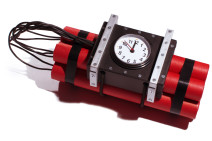List of Specific Industries
North American Industry Classification System (NAICS) codes for this industry
Industry Description
Traditional lighting circuits use one switch to control one circuit; “three-way” switches allow control to be at two locations, such as on two sides of a room (circuit on when you enter the room; walk through the room; then circuit off when you leave the room of the other side). Low voltage systems allow as many points of control as a home owners wishes to have and each switch requires only a simple small gauge twisted pair cable for control.
Some insurance companies offer lower rates for low voltage systems since there is less use of electrical cable to wall switches. Low voltage systems use wall-mounted metal boxes to hold the bi-stable devices. Low voltage wiring used to activate the devices terminates in one side of each box while line voltage romex cable (115 VAC) used to power lights and other devices goes from the other side to the light fixture or other device being controlled.
Such systems are easily adaptable to home network systems, because control of each circuit can be done anywhere in the home using lightweight digital circuits to activate the bi-stable switching devices. All low voltage wiring installations are governed by National Electric Code (NEC) and local construction code requirements.
(11-29-2013)














What People are Saying.